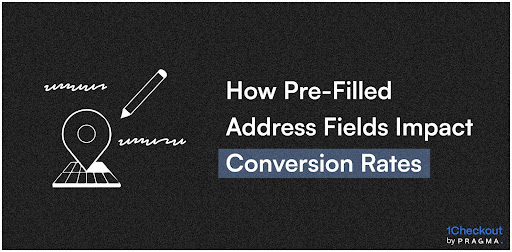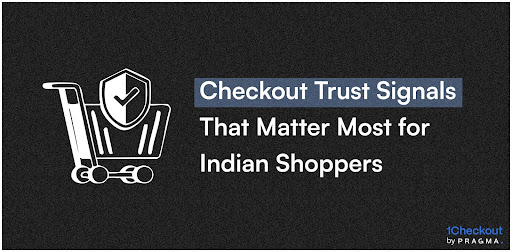Why D2C and all of Ecommerce is after a ‘One-page Checkout’

What is a One-page Checkout?
When it comes to providing a simple checkout experience for online shoppers, One-page checkout has become an increasingly popular option for e-commerce businesses.
One-page checkout when implemented right helps end users because of its easy to use experience, responsiveness and other desirable user-friendly features.
It allows users to make their purchases on a single, consolidated page, which can greatly improve the shopping experience for customers by reducing the number of steps required to complete a purchase, as well as simplifying the checkout process.
Simultaneously it also helps businesses, as One-page is the way to go for brands that are scaling fast, handling a bulk of orders during holiday season etc – all while gathering the right data to understand the cause behind Abandoned Checkouts, user behaviour for up-selling & cross selling, and more.
Pros of One-page Checkout for Businesses:
- Increased Conversion Rate - By reducing the number of steps required to complete the checkout process, customers are more likely to complete their purchase. This leads to a higher conversion rate for businesses.
- Improved User Experience - With a one-page checkout, customers no longer need to navigate between multiple steps and pages. This makes for a much smoother checkout experience, leading to happier customers.
- Reduced Cart Abandonment - By streamlining the checkout process, customers are less likely to abandon their carts. This can result in a significant increase in sales for businesses.
Pros of One-page Checkout for Online Consumers:
- Improved security - Customers can complete their purchase in a single page, eliminating the need for multiple pages aka multiple steps.
Note: This also reduces the risk of cart abandonment and reduces the risk of customers leaving the site before their purchase is complete. - Enhanced customer satisfaction - The streamlined checkout process leads to a more efficient and pleasant experience for customers, resulting in higher levels of customer satisfaction.
- Increased efficiency - One-page Checkout can handle high volume of orders without overloading the server on the merchant’s/brand’s side.
Meaning, there won’t come a time where a consumer sees a “SYSTEMS DOWN” sign during Holiday Sales, due to the overwhelming influx of orders. - Fast and secure checkout - One-page checkout allows customers to complete their purchase quickly and easily. Enough said.
Why D2C brands prefer One-page Checkout or 1Checkout
One-page offers maximum customer centricity, which is what Direct-to-consumer brands are looking for...
- Simplicity: A one-page checkout streamlines the checkout process by consolidating all the necessary steps into a single page.
- Better mobile experience: A one-page checkout is typically optimised for mobile devices, which is important since more and more customers are making purchases on their smartphones.
- Increased trust and security: By presenting customers with a clear, concise checkout process, a one-page checkout can increase their trust in the online store and reduce the risk of sensitive information being entered into the wrong fields.
- Reduced friction: By eliminating the need to navigate multiple pages, a one-page checkout reduces friction in the checkout process, which can lead to increased conversion rates.
Overall, the One-page Checkout offers a number of advantages over multi-page systems that are present on WooCommerce, Wix and other such platforms.
The streamlined checkout process leads to improved user experience, and in turn a reduced cart abandonment rate.
Note:
- One-Page Checkout uses a single OTP log-in, is much faster and reduces any inconveniences, as it allows users to purchase an item in under 15 seconds.
- Additionally 1Checkout saves customers information and enables rapid checkout (under 5 seconds) across ecommerce brands (brands using 1Checkout)
Image insert - “1Checkout supports all Payment modes
Card, UPI, Netbanking, Wallet, Card/Cardless EMI, BNPL, COD”
Types of One-page Checkout
- Collapsible checkout: This type of one-page checkout starts with a compact form that expands to reveal additional fields as needed. This allows customers to see all the necessary steps at a glance and to complete the checkout process more quickly.
- Progressive checkout: A progressive checkout presents customers with one step at a time, guiding them through the checkout process. This type of checkout can reduce customer confusion and increase the chances of successful conversion.
- Accordion checkout: An accordion checkout is similar to a progressive checkout, but it uses a collapsible accordion interface to present the steps. This allows customers to see all the steps at a glance and to move back and forth between them as needed.
- Tabbed checkout: A tabbed checkout uses a series of tabs to separate the different steps in the checkout process. This allows customers to see all the steps at a glance and to quickly switch between them.
- Sticky checkout: A sticky checkout is a one-page checkout that remains visible as customers scroll down the page. This allows customers to complete the checkout process without having to scroll back up to the top of the page.
- Inline checkout: An inline checkout is a one-page checkout that is integrated into the product page. This allows customers to complete their purchase without leaving the product page, reducing friction and increasing the chances of successful conversion.
Each of these types of one-page checkout designs has its own advantages, and the best choice depends on the specific needs of your online store.
Multi-page Checkout < One-page Checkout < 1Checkout
One-page checkout being a much modern checkout process has a few advantages over other checkout processes being used currently

To sum it up, a One-page Checkout coupled with a 1-step checkout gives the 1Checkout.
As it follows a One-page Checkout for the initial registration or first use, and for every following purchase; the 1Checkout uses a rapid 1-step Checkout process that takes less than 5 seconds to complete - Making it a Hybrid Checkout experience.
How to optimise a One-page Checkout for Shopify
When optimising a one-page checkout for Shopify, D2C businesses should take a few steps to ensure the best customer experience. These steps include
- Designing the page in such a way that only the necessary information is requested;
- Providing customers with guidance on the page, such as helpful tips or instructions on how to complete their purchase;
- Making the page responsive, so that customers can access it on any device;
- Considering the different types of one-page checkout available, such as single-page checkout, progressive checkout, and express checkout;
- Ensuring that customers have the option of express checkout, which can reduce the amount of time it takes to complete a purchase;
- Testing the page to ensure that it is user-friendly and secure.
By taking these steps, businesses can ensure the checkout process is as efficient and secure as possible, and that customers have the best possible experience when making a purchase.
All of these steps are taken a step further by your very own private checkout under Shopify - The 1Checkout.
Where we pragmatically focus on providing customised options to your customers.
In Conclusion:
Ultimately, One-page Checkout offers many advantages over traditional checkout methods, making it the ideal choice for E-commerce businesses across platforms like Shopify, WooCommerce and Wix.






